Located a short distance from Sapporo on the west coast of Hokkaido, the charming port city of Otaru is filled with museums, charming shops, and a re-purposed shipping canal which is easily one of the most atmospheric places on the island of Hokkaido.
Come check out our Otaru travel guide as we cover the best things to do in Otaru, Japan.
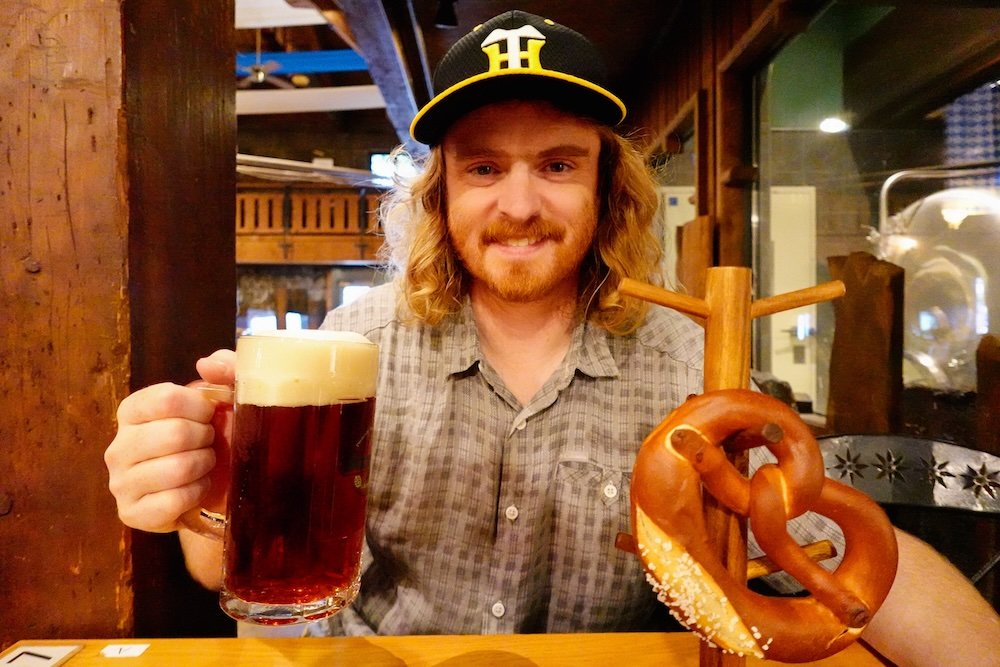
Top Attractions
Begin your tour of this harbour city by making the Otaru City Museum your first stop. This institution is split into two parts – the first one is located in the city centre, where you will be able to learn about its history and the natural landscapes surrounding this urban area. Additionally, there are exhibits which outline the lengthy history of the Ainu people, an indigenous tribe which had called the island of Hokkaido their home for many millennia.
After this, make your way out of the centre to the railway component of this museum. Situated along a closed-off line, you’ll get to examine several trains from various periods, as well as exhibits inside which describe the railway’s operation in the Otaru area over the years.
source: Samuel and Audrey YouTube Channel: Nomadic Samuel + That Backpacker hosting
In previous generations, Otaru had served as the primary financial centre of the northern half of Japan. You can learn about that era during the time you’ll spend at the Otaru Museum of the Bank of Japan.
Opened to the public in 2003 in the former bank branch of the Bank of Japan in the centre of Otaru, the displays here will detail the history of this important financial institution. Feel what it is like to carry a duffel bag containing 100 million in yen notes (important aside for would-be bank robbers: the bills are fake), and walk inside their primary vault. Best of all, admission is free, making it a great place for budget travellers to visit.
Otaru has long been a place well-suited to artisans. Learn about its association with the glass blowing trade during a visit to the Taishougarasu Museum. Watch as they make everything from marbles to wine glasses, or simply check out the wide variety of finished products they have on display.
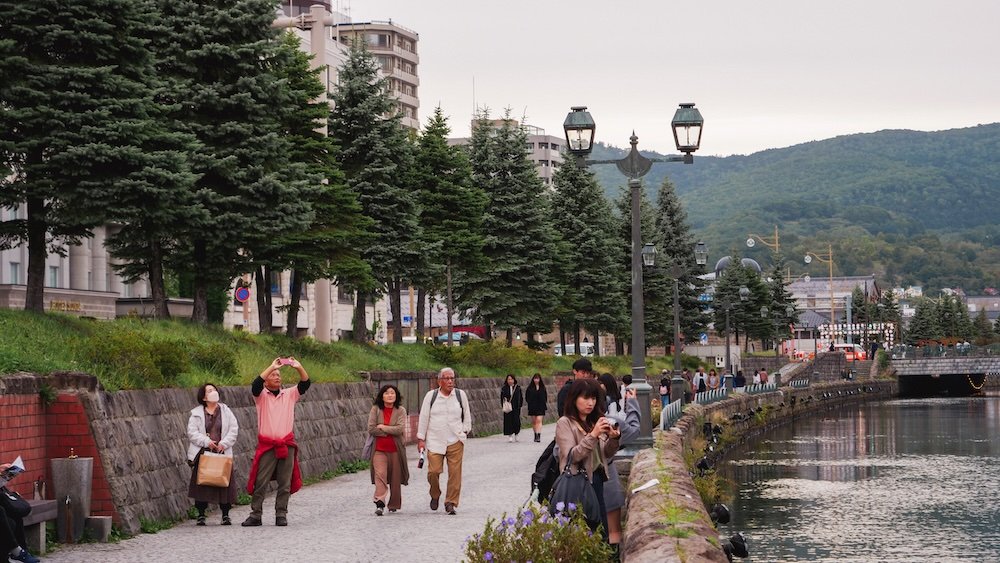
Want to take one of their specimens home with you? There is plenty of glassware available for sale here, so browse their collections and find something that’s right for you.
Hokkaido is the place in Japan where you will find a noticeable European flavour, as its rugged mountains, cold winter weather, and its history as an open port to European traders will leave you with this impression.
Knowing this, it shouldn’t come as too much of a shock to find an attraction along the lines of the Otaru Music Box Museum. Built during the Meiji-era, which was noted for its emphasis on modernizing the country along Western lines, its European styling and creaky wooden floors wouldn’t be out of place in Switzerland.
This creates the perfect atmosphere for a sizable collection of music boxes, many of which can trace their origins to Western and Central Europe. Want to take home your own? There is a workshop on the second floor where you can have your own designed and made for you.
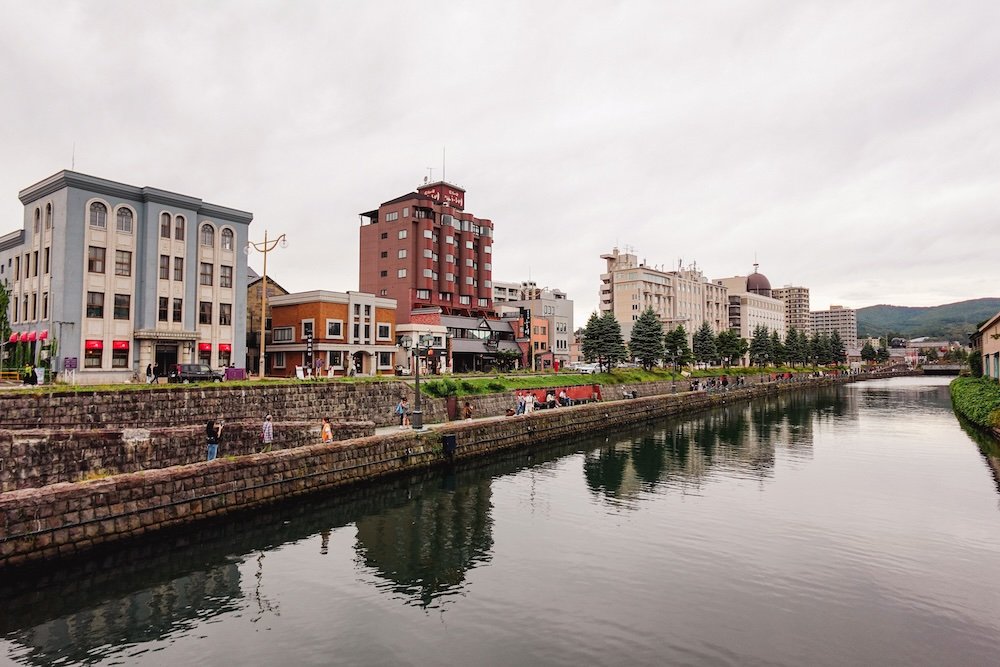
Other Attractions
Travelling to Otaru as a family? Check out the Otaru Aquarium if your kids are into marine animals. Featuring over 5,000 animals representing 250 species, this attraction focuses on showing off ones that call the waters off Hokkaido and those in the polar regions home.
These include walruses, dolphins, sea lions, and even penguins – when you combine this with the fact that admission is only 200 yen for children and 1400 yen for adults, it is an attraction which fits in well with the plans of family travellers on a budget.
While Otaru is still an important port on the island of Hokkaido, its evolution over the years means certain elements of its docklands have become obsolete to shipping. Rather than fill in the Otaru Canal after its closure, city officials made the smart move to preserve it as an attractive element of its downtown.
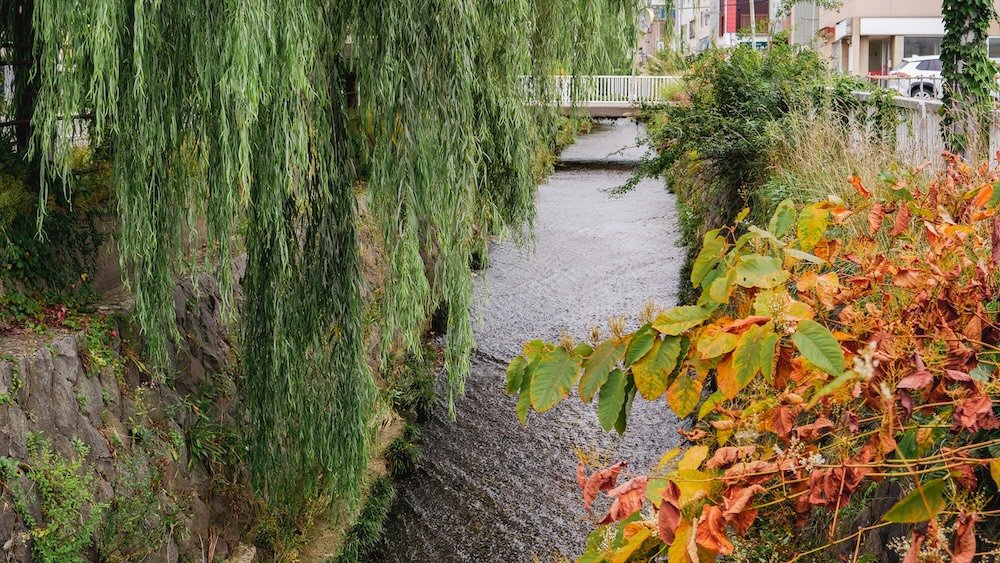
These days, it is lined with shops, restaurants, museums, and other attractions which are housed in former warehouses along its length. In winter, it is home to the Snow Light Path Festival, which lights up the waters of the canal with paper lanterns, and its shores with snow sculptures.
If you are a fan of historic homes, drop by the Otaru Kihinkan during your time in this city. The former mansion of the owner of a bunch of herring boats, its beauty and grace have been maintained to the present day.
Its garden makes for a lovely walk during the warmer months of the year, while the on-site restaurant is a great place to have lunch whenever you end up visiting.
Before leaving Otaru, head up the Mt. Tengu Ropeway. With sweeping views of the city and the sea below, it is a great place to go at any time of year. After snapping your share of shots, check out the small ski museum on site, as it will provide an insight into the development of this sport on Hokkaido.
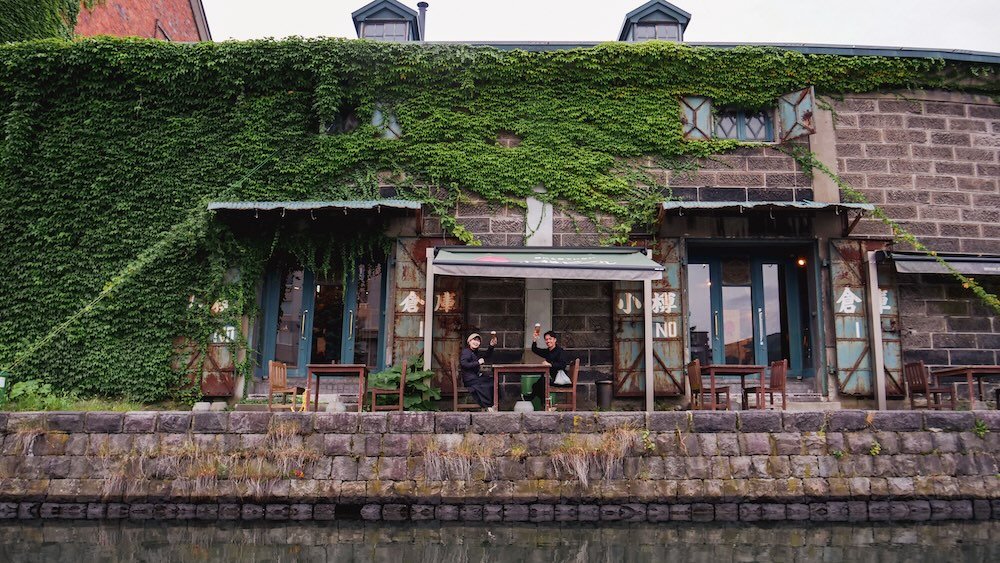
Top 10 Things To Do in Otaru, Japan For Visitors
Below are some of the top things to do in Otaru that bring out its personality and soul.

1. Beef Cutlet Otaru Kurosawa for Lunch
The first encounter with Beef Cutlet Otaru Kurosawa can redefine your notion of a perfect midday meal. Step into this tucked-away restaurant, and you’ll notice a quiet intimacy, a sense that every plate is crafted with care. The beef cutlets themselves come out sizzling, each bite offering a delicate balance of crispy exterior and tender, juicy center. It’s not just about flavor—there’s an artistry in how the meats are cut, breaded, and served, honoring Japan’s devotion to meticulous food preparation. While savoring the dish, take your time, notice the subtle spices, and let the richness unfold slowly. The staff often provides small side dishes or pickles that complement the main event, adding layers of taste and texture. This is the kind of place where a single meal can anchor your memory of the city. Leaving with a satisfied belly and warm heart, you’ll realize Otaru’s culinary scene has just begun to charm you.
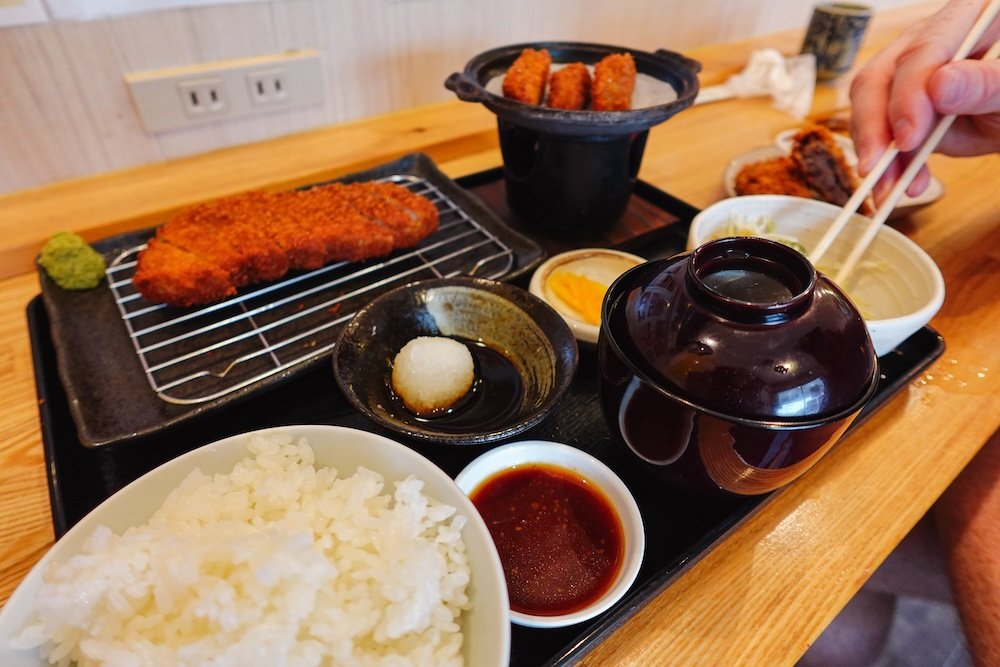
- Highlights: Rich beef cutlets, intimate ambiance, genuine Japanese craftsmanship in cooking
- Don’t Miss: Trying seasonal side dishes or local pickles for added flavor depth
- Great For: Meat lovers, fans of comforting lunches, anyone curious about Japanese beef specialties
Tip: Arrive early or reserve ahead—the restaurant’s reputation often leads to brisk midday crowds.
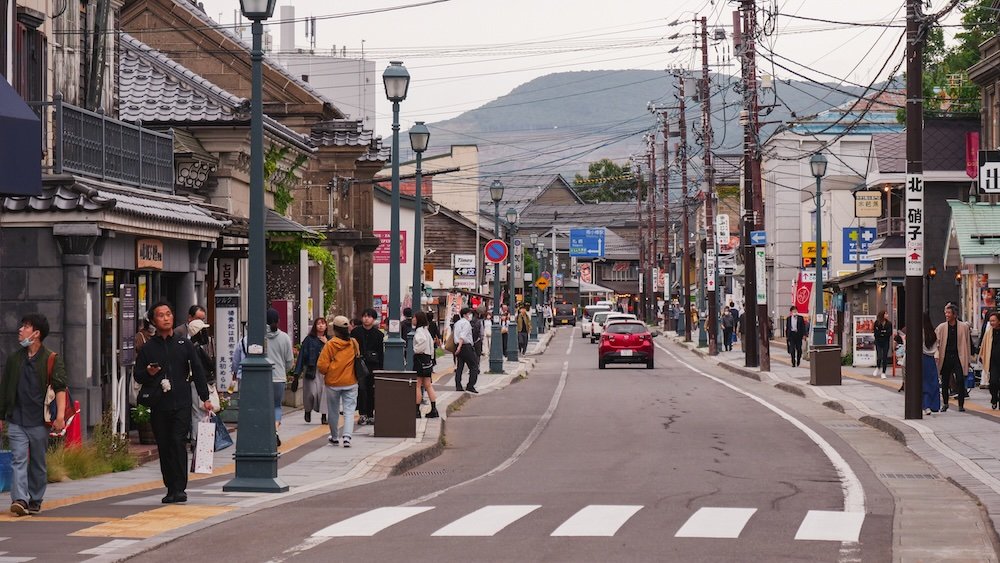
2. Warehouse District and Glass Shops
Strolling through the Warehouse District in Otaru feels like stepping into a painting where old brick structures line a tranquil canal. Once bustling storage areas for herring and other goods, these warehouses now host shops, cafés, and art studios, their weathered exteriors contrasting with the creativity inside. Otaru’s fame in glassmaking shines here, with boutique glass shops presenting intricate sculptures, jewelry, and tableware that sparkle in soft light. Some artisans blow glass on-site, demonstrating how molten material transforms into delicate forms under skilled hands. Browsing these shops is sensory delight: vibrant colors, shimmering surfaces, and that quiet crackle of artistry in the air. Give yourself time—touch a pendant, hold a tiny glass animal, feel the weight and cool smoothness. It’s not just about buying souvenirs; it’s about understanding a craft that ties together local heritage and global appreciation. As you explore, the warehouses whisper old stories while the glass shops sing fresh ones, merging past and present in every piece.
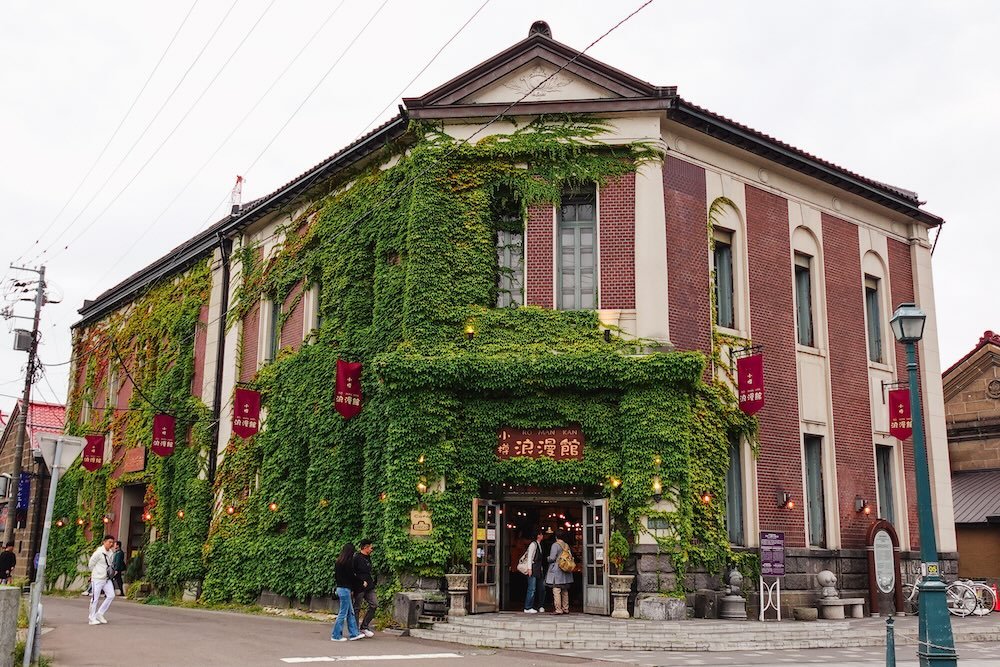
- Highlights: Historic brick warehouses, vibrant glass artistry, live demonstrations of glassblowing
- Don’t Miss: Purchasing a small, handcrafted glass souvenir to take home a piece of Otaru’s identity
- Great For: Art enthusiasts, souvenir seekers, travelers curious about local craftsmanship
Tip: Ask shopkeepers about custom orders—some artisans create personalized pieces if time allows.
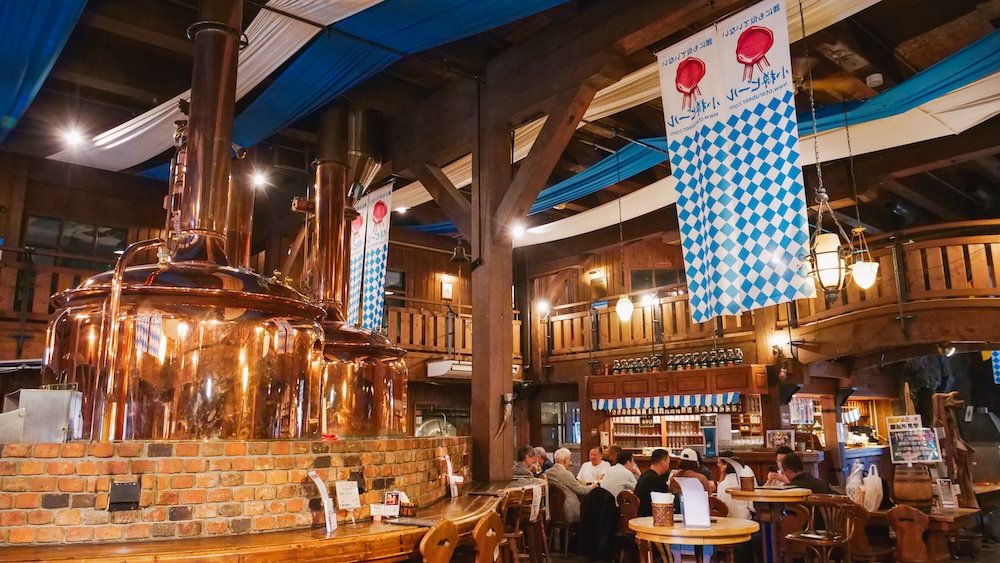
3. Otaru Beer
Sipping Otaru Beer introduces you to a local craft scene that blends tradition with innovation. The city’s brewing culture pays homage to German techniques, resulting in crisp, flavorful beers that stand confidently alongside global favorites. Visiting an Otaru Beer hall or brewery offers a casual yet enlightening experience—bartenders happily suggest styles, guiding newcomers to discover their perfect pint. Enjoying a lager or ale here is more than just quenching thirst; it’s embracing a local pride steeped in craftsmanship and quality ingredients. The interior vibes often mix rustic wooden furniture with industrial touches, making it easy to settle in for a long, leisurely drink. Seasonal brews pop up occasionally, so returning visitors may encounter fresh surprises. Pairing your beer with simple bar snacks, perhaps local cheese or smoked fish, enhances the moment. Ultimately, Otaru Beer delivers a flavor of the region’s personality—robust yet approachable, much like the city itself.

- Highlights: Locally brewed beers, warm pub atmospheres, occasional seasonal and limited editions
- Don’t Miss: Asking staff for recommendations on pairings and special releases
- Great For: Beer aficionados, curious tasters, anyone who appreciates a relaxed drink
Tip: Try a sampler set—small pours let you taste multiple varieties before committing to a full glass.
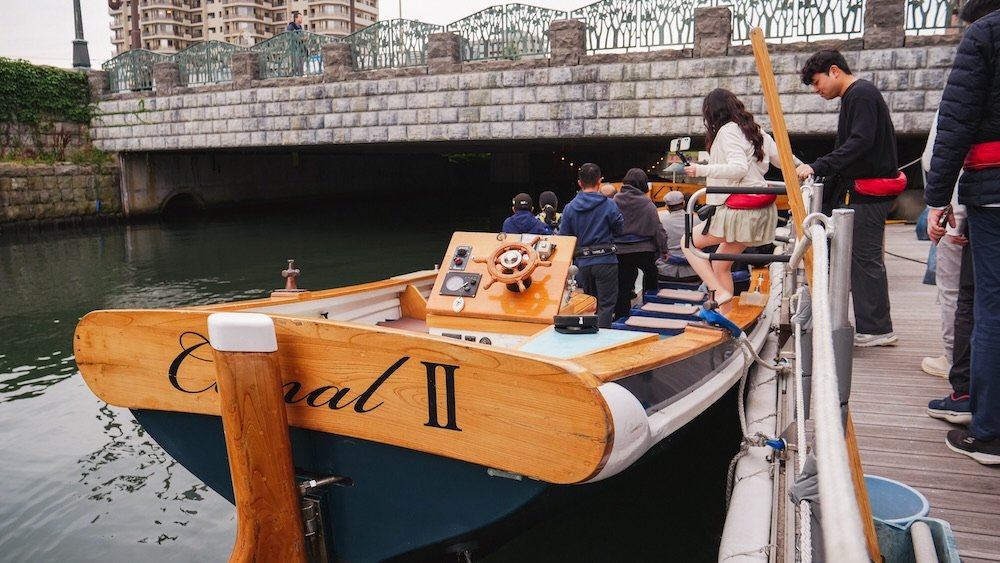
4. Otaru Canal Boat Cruise
Gliding along the Otaru Canal in a small boat feels like uncovering the city’s hidden poetry. Early industrial wealth once crowded these waters with ships and cargo; today, calm waves reflect old warehouses and bridges with a painterly touch. The gentle motion of the boat, the soft commentary from the guide, and the shifting light over brick facades immerse you in Otaru’s layered history. Each turn reveals fresh perspectives: a warehouse corner here, a quiet alley there, perhaps a distant fisherman’s silhouette near the harbor’s edge. The best cruises occur near sunset, when golden hues paint the water’s surface and lights begin to glow softly in shop windows. Sometimes, you’ll hear faint laughter drifting from nearby cafés or smell a whiff of coffee from a hidden roaster. By the end of the ride, the canal itself feels like a storyteller—no grand gestures, just subtle details piecing together Otaru’s character. Leaving the boat, you carry a gentle calmness, a feeling that you’ve glimpsed the city’s soul.
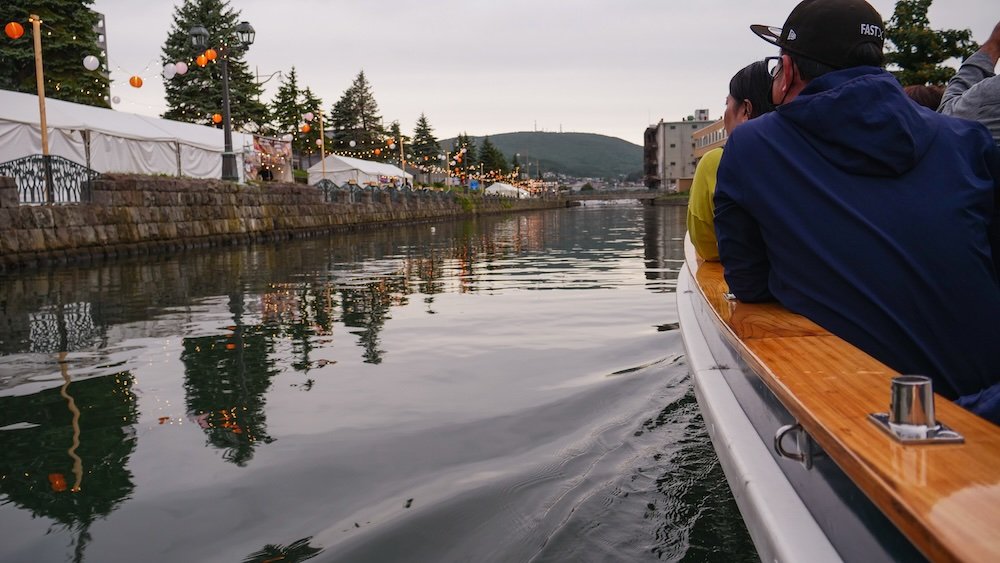
- Highlights: Scenic water views, historical warehouses, tranquil atmosphere at dusk
- Don’t Miss: Evening cruises for the interplay of light and reflection
- Great For: Romantics, photographers, fans of peaceful urban escapes
Tip: Bring a light jacket—even in warmer months, a breeze on the water can feel surprisingly cool.
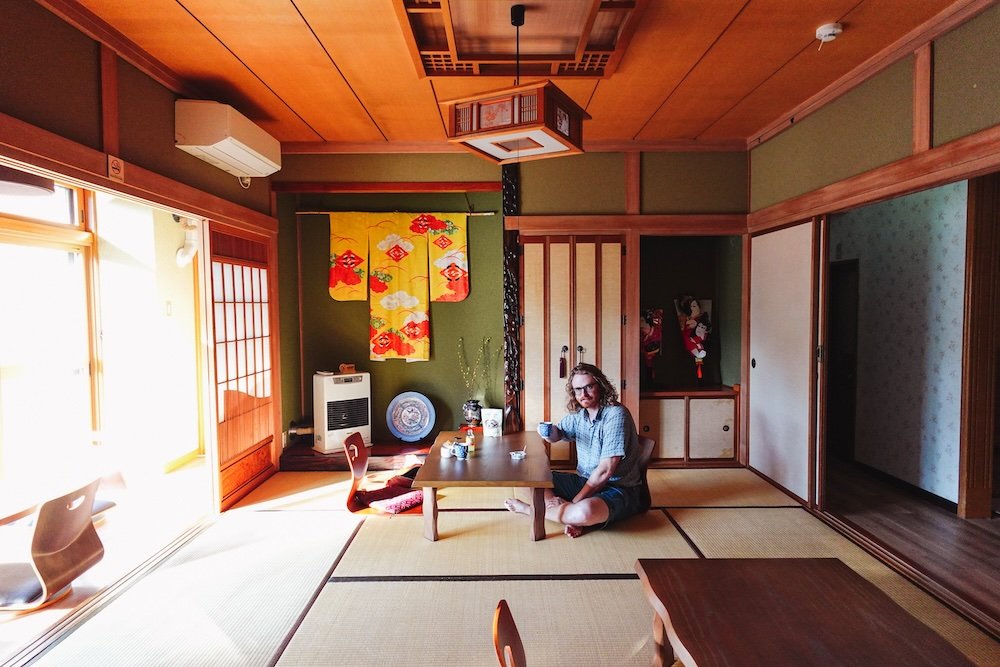
5. Plumhouse Guesthouse Tour
A visit to the Plumhouse Guesthouse offers a window into everyday Otaru life, blending hospitality, tradition, and comfort. It’s more than just checking out a place to sleep; it’s about understanding how local architecture and design reflect the city’s climate and culture. Guides often highlight the house’s wooden beams, tatami rooms, and minimalistic décor that emphasize simplicity and warmth. Depending on your timing, you might see how seasonal changes influence interior decorations—perhaps dried flowers in autumn, or airy linens in summer. Every corner seems arranged with care, from carefully chosen pottery to small, meaningful knickknacks telling a family story. Chatting with hosts can lead to valuable insights on neighborhood eateries, best walking routes, or lesser-known events in town. The intimate scale of the Plumhouse fosters easy conversation, making strangers feel like friends by the time you leave. Touring this guesthouse reminds you travel isn’t only about sights; it’s about people, homes, and the subtle rhythms that make a place feel alive.
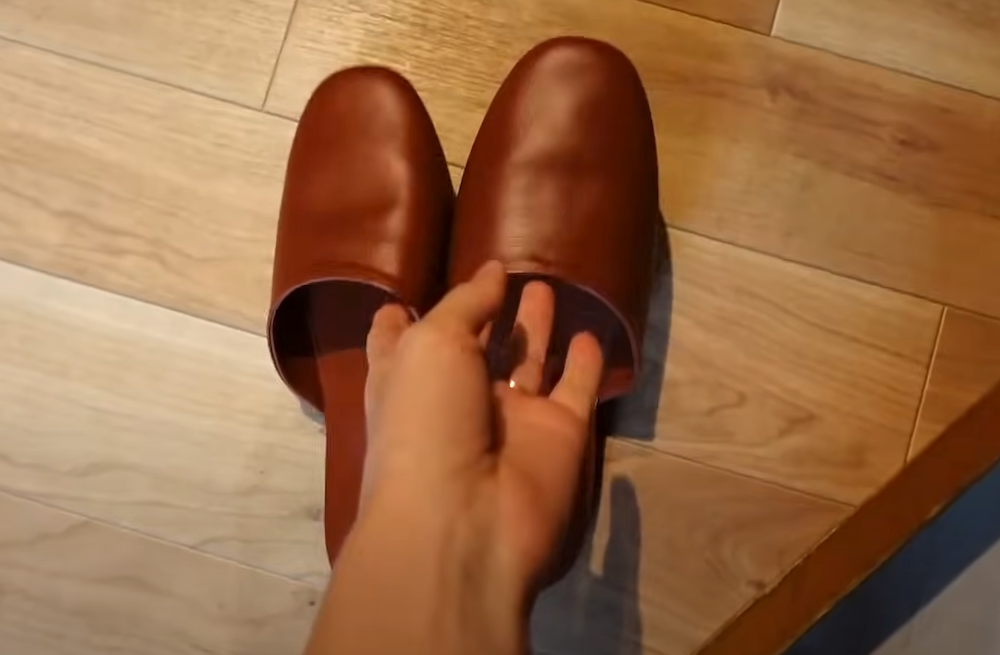
- Highlights: Traditional Japanese interior, personal stories from hosts, decor reflecting local sensibilities
- Don’t Miss: Asking about local recommendations—hosts often know hidden gems tourists overlook
- Great For: Cultural immersions, curious travelers, those appreciating personal hospitality
Tip: Remove your shoes at the entrance—following local customs shows respect and fosters a welcoming vibe.
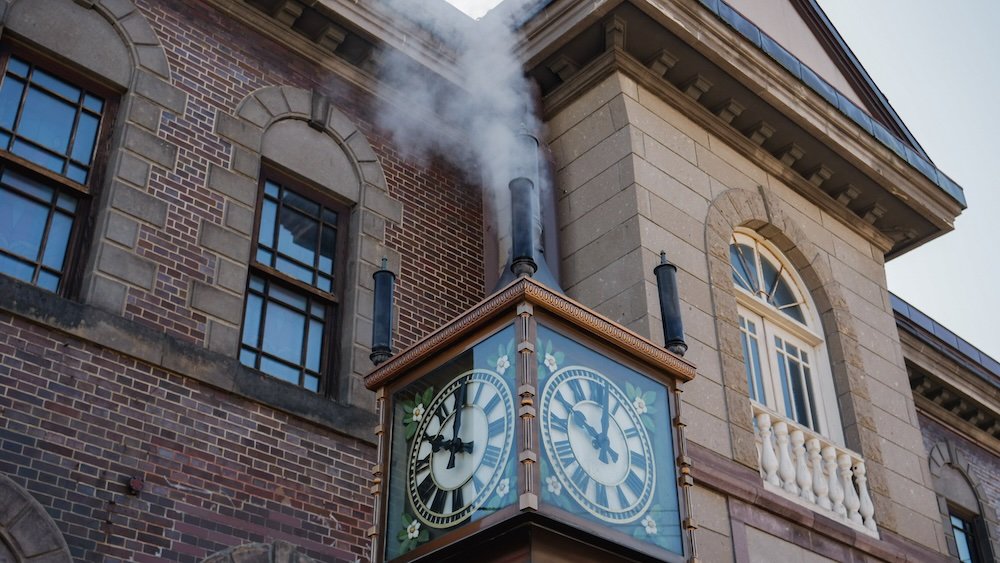
6. Otaru Steamwhistle Clock
The Otaru Steamwhistle Clock, reminiscent of Gastown’s famous timepiece in Vancouver, adds a whimsical touch to the city’s historic fabric. Every quarter hour, steam and sound combine in a charming performance that draws onlookers, cameras raised and smiles abundant. Its old-fashioned design, polished copper and etched details, stands proudly against Otaru’s classic architecture. Children gasp at the sudden puff of steam, while adults appreciate the craftsmanship and nod to nostalgia. Standing by the clock feels like straddling eras—digital screens in your pocket, yet drawn to a mechanical wonder that counts time with human flair. The clock’s predictable schedule makes waiting a small delight, not a chore. Catching it at dusk, as lanterns glow and evening settles, magnifies its enchantment. This clock doesn’t just tell time; it shares Otaru’s heart, reminding you life can be measured in delightful moments.
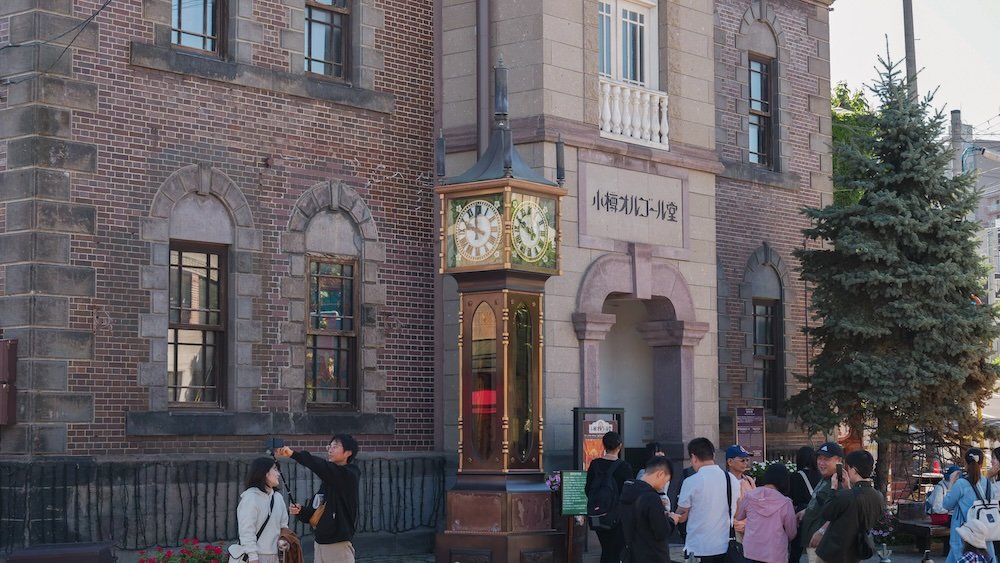
- Highlights: Regular steam whistle performances, photogenic old-world design, universal appeal for all ages
- Don’t Miss: Watching the clock at night for a more magical ambiance
- Great For: Families, history buffs, seekers of quirky attractions
Tip: Check the whistle schedule—arriving a few minutes beforehand ensures you won’t miss the show.
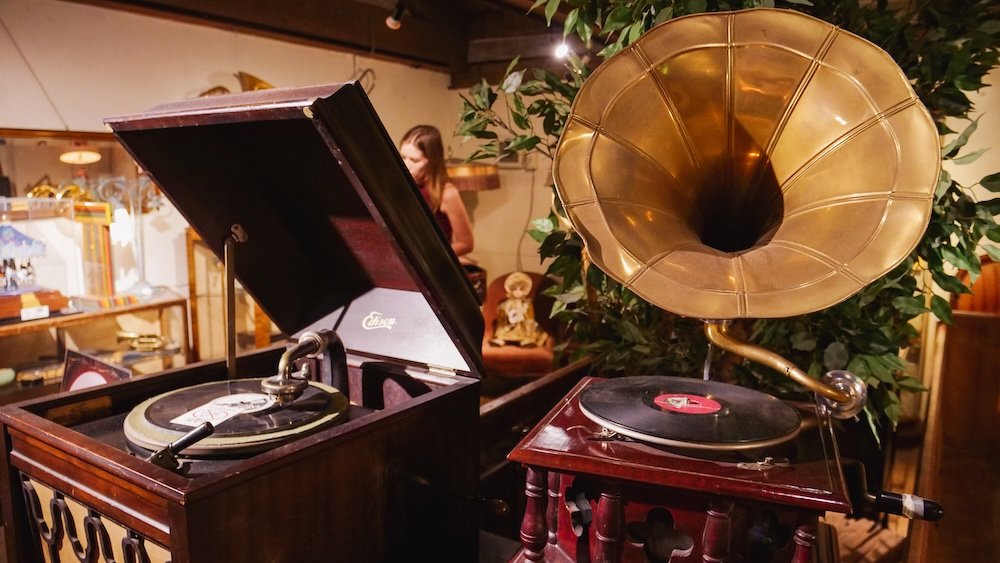
7. Otaru Music Box Museum
Stepping into the Otaru Music Box Museum feels like entering a fairy tale brimming with melody and delicate artistry. Rows of hand-crafted music boxes line shelves, their carved wood and intricate glass waiting to reveal secret tunes. The air hums softly, as gentle tinkling notes float through corridors, each box a story waiting to be heard. Some designs evoke nostalgia—tiny dancers twirl inside domes, miniature trains circle hand-painted landscapes—while others experiment with modern motifs. Visitors can test certain boxes, winding them up and listening closely, eyes closed, letting the melody guide their imagination. In a small workshop area, artisans sometimes show how gears and pins create music from metal and wood. The museum’s charm lies in its quiet insistence that simplicity and craftsmanship still matter in a digital age. Leaving, you carry a memory like a lingering tune, gentle and comforting.
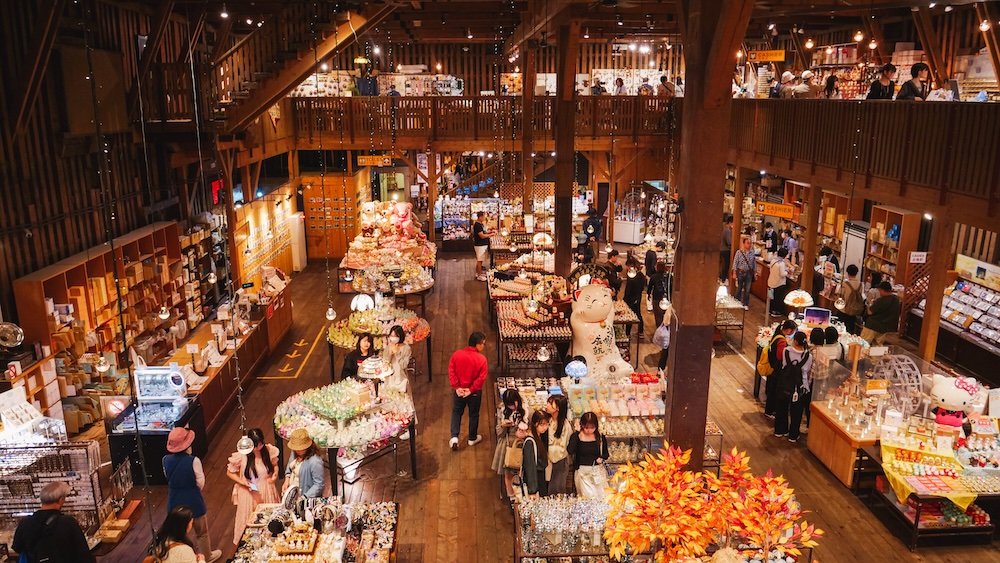
- Highlights: Intricate music boxes, live demonstrations, a nostalgic atmosphere of sound and craft
- Don’t Miss: Buying a small music box as a personal keepsake or gift
- Great For: Dreamers, art lovers, travelers seeking something whimsical and heartfelt
Tip: Listen carefully before choosing—each box’s melody sets a unique mood you’ll take home.

8. Kitaichi Hall Gas Lamp Cafe
The Kitaichi Hall Gas Lamp Cafe merges old-world ambiance with a soothing culinary experience. Gas lamps cast a gentle glow over polished wooden tables, and stained-glass windows filter soft light that dances on your teacup’s surface. The menu blends Hokkaido ingredients into comforting dishes—perhaps a creamy chowder or a delicate pastry—accompanied by tea or coffee brewed with care. There’s an almost spiritual hush in the room, broken only by quiet conversations and the soft clink of spoons on porcelain. As you savor bites, you sense this café’s soul: it respects tradition yet welcomes modern tastes. Take your time; let each sip and spoonful mark a small, joyful pause in your day. The staff’s gracious hospitality ensures even first-time visitors feel like cherished regulars. This is a place where nourishment extends beyond the plate, feeding both body and spirit.
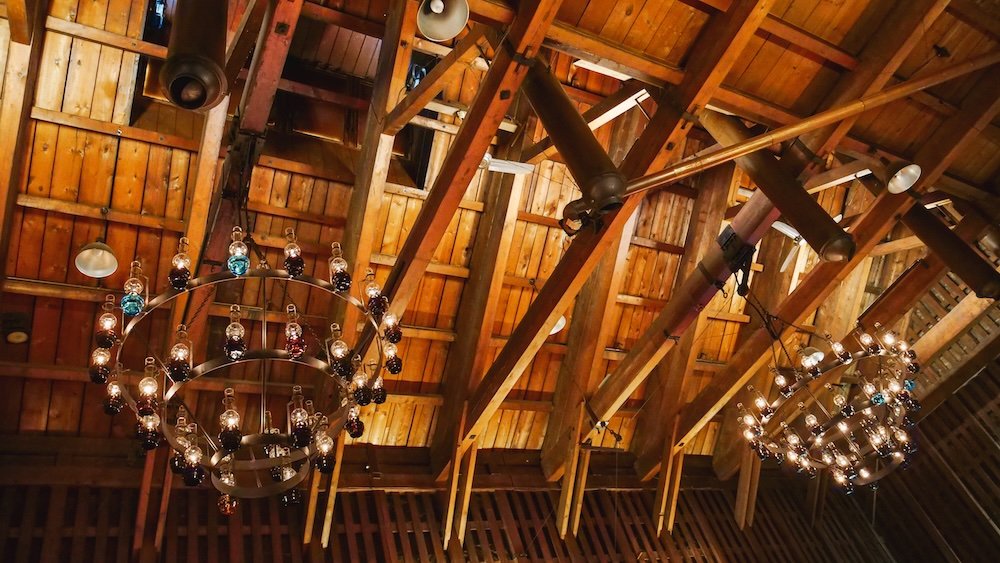
- Highlights: Warm gas lamp lighting, traditional-meets-modern menu, tranquil atmosphere
- Don’t Miss: Trying a signature dessert or a locally inspired beverage
- Great For: Relaxing breaks, couples seeking a romantic nook, fans of atmospheric dining
Tip: Visit off-peak hours—a quieter café means more room to unwind and appreciate the details.
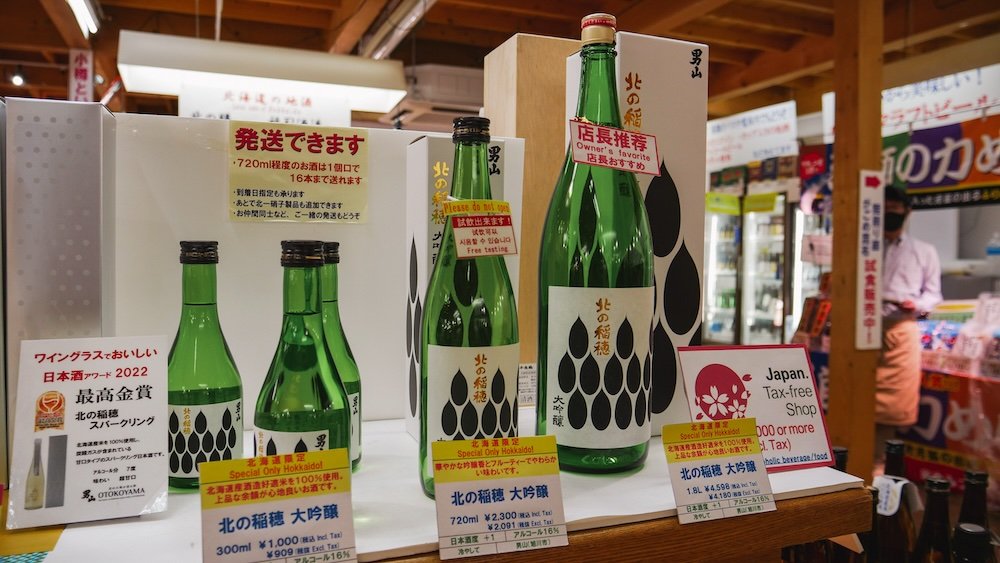
9. Sake Tasting
Sipping sake in Otaru connects you to centuries of Japanese tradition, filtered through this coastal city’s distinctive climate and local ingredients. Many sake bars or breweries offer tasting flights, allowing you to compare dryness, fragrance, and depth of flavor. Skilled bartenders guide your palate, explaining how rice polishing or fermentation techniques influence the final character. It’s not about getting tipsy; it’s about exploring subtle complexities, discovering which nuances suit your personal taste. Some bottles pair well with seafood, others with sweet treats, and learning these combinations adds a new dimension to your culinary adventures. The atmosphere in a sake-tasting spot often feels warm and inclusive—locals and travelers bonding over shared curiosities. Even if you arrive a novice, you leave more informed, your memory laced with the gentle burn and floral notes of premium sake. Ultimately, sake tasting here plants a small seed of appreciation that might bloom long after your trip ends.
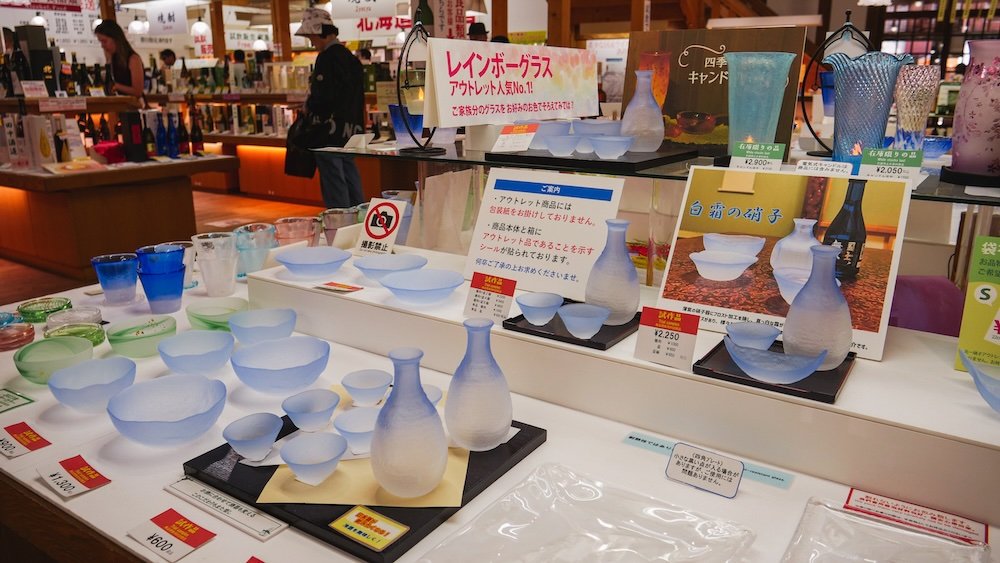
- Highlights: Guided tastings, variety of sake styles, educational yet relaxed vibe
- Don’t Miss: Trying a premium junmai daiginjo for a refined, aromatic experience
- Great For: Foodies, beverage enthusiasts, travelers open to new flavor horizons
Tip: Pace yourself and sip water between samples—cleansing your palate helps you appreciate each sake’s unique profile.
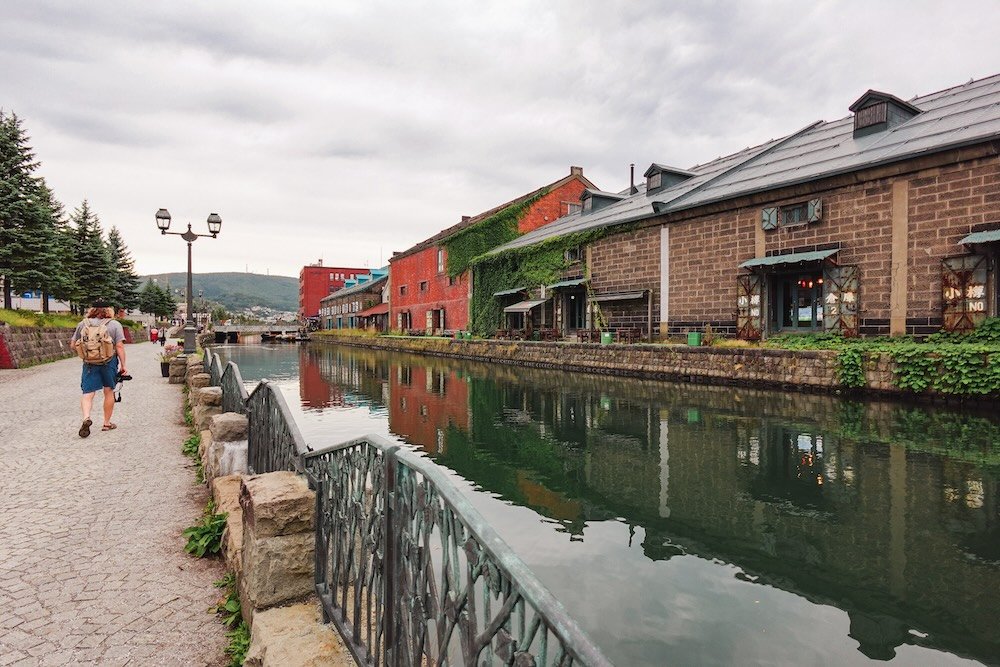
10. Wandering Around Otaru Just For Fun
Sometimes, the best plan in Otaru is to have no plan at all. The streets, lined with vintage architecture and old lamp posts, invite aimless exploration. Small alleys may reveal hidden cafés, quiet shrines, or unexpected street art. Listen to distant laughter, inhale the faint smell of roasted coffee or grilled seafood, and let your senses guide you. Without a strict itinerary, you appreciate each discovery more deeply, enjoying the city’s gentle pace and friendly nods from locals. This unstructured wandering lets Otaru’s essence unfold naturally, painting an authentic portrait of daily life. Occasionally, you’ll stumble upon a small park bench with a pleasant view or a boutique selling handmade trinkets that resonate with your taste. By the end, these chance encounters form a tapestry of memories, intimate and true.
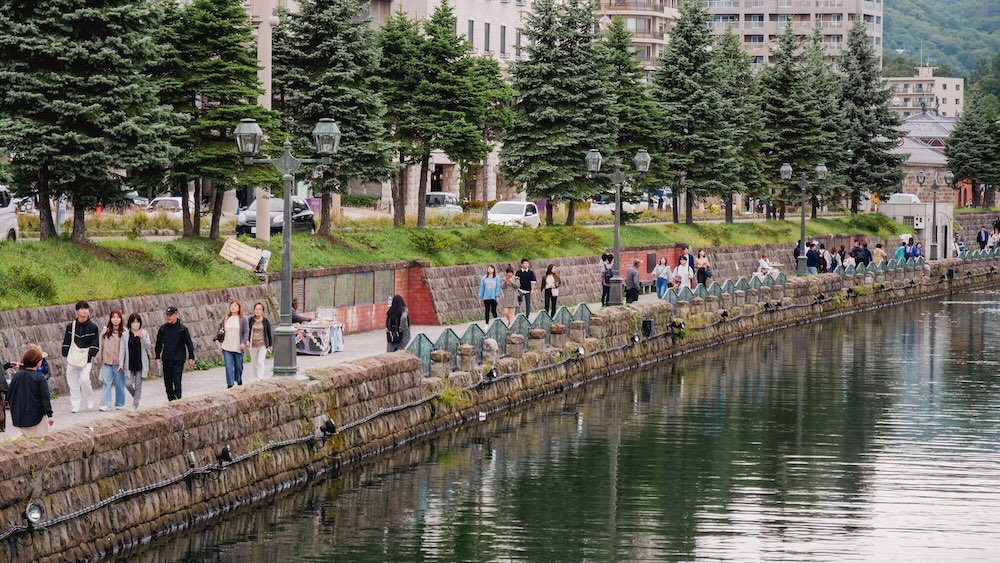
- Highlights: Serendipitous finds, authentic local encounters, a deeper sense of place
- Don’t Miss: Pausing occasionally, looking up at old facades, noticing tiny details others pass by
- Great For: Adventurous souls, slow travelers, anyone burned out on rigid sightseeing schedules
Tip: Wear comfortable shoes—Otaru’s charm often lies just around the next corner.
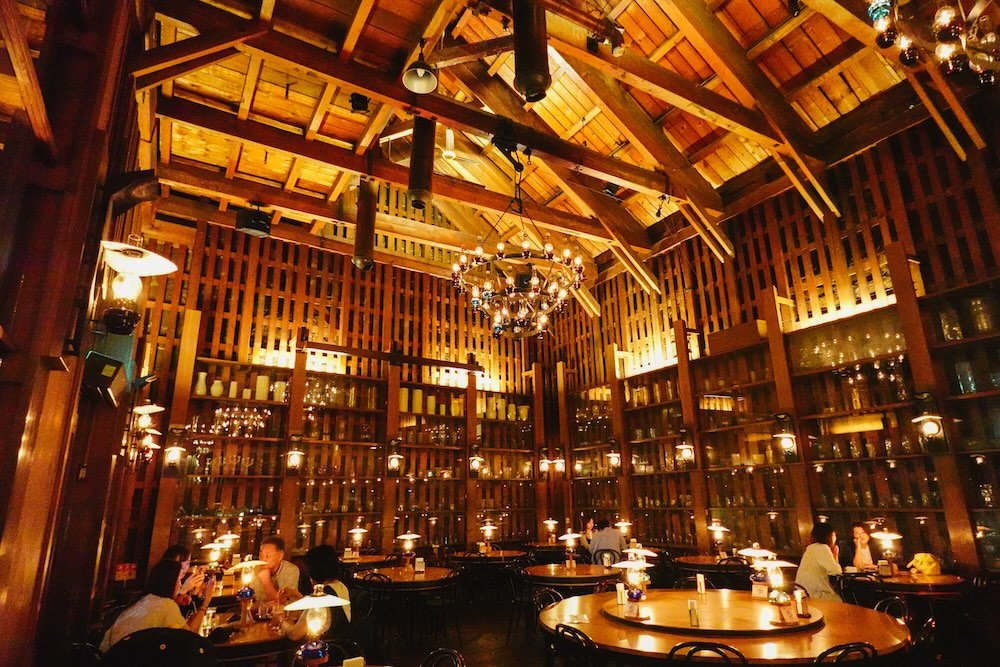
Tours For Visitors To Otaru, Japan
Here are some great tours to consider whilst visiting Otaru.
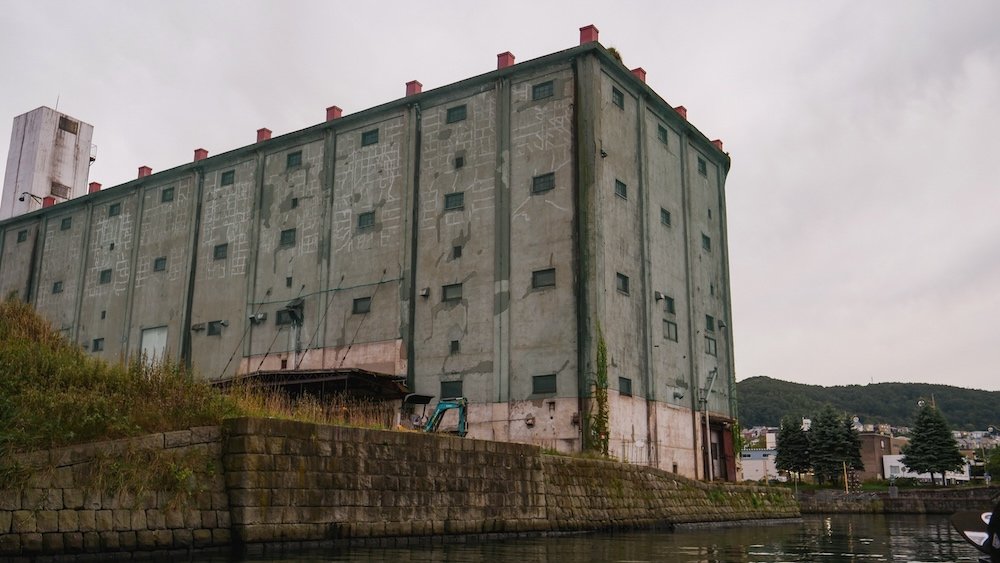
1. Historic Canal and Warehouse District Tour
A historic canal tour in Otaru isn’t just a sightseeing trip; it’s an immersion into the city’s trading legacy and architectural evolution. As the boat glides along calm waters, you’ll pass old warehouses now transformed into shops, galleries, and cafés, each façade whispering stories of herring fishers and merchants who shaped Otaru’s identity. Guides often share anecdotes, pointing out subtle design elements that hint at foreign influences and local craftsmanship. There’s a gentle rhythm to the journey—soft ripples, distant laughter, and the glow of lanterns reflecting on the surface—inviting you to slow down and appreciate moments that transcend time. By the end, you leave understanding that Otaru’s canal isn’t just a pretty postcard, but a living tapestry of history and culture.
- Highlights: Evening cruises for magical reflections, knowledgeable guides sharing hidden stories, photo-worthy vintage warehouses
- Don’t Miss: Checking out smaller side canals branching from the main route—some hold pleasant surprises
- Great For: History buffs, romantics, first-time visitors seeking a unique perspective
Tip: Bring a light jacket—even on warmer days, a gentle breeze off the water can feel surprisingly cool.
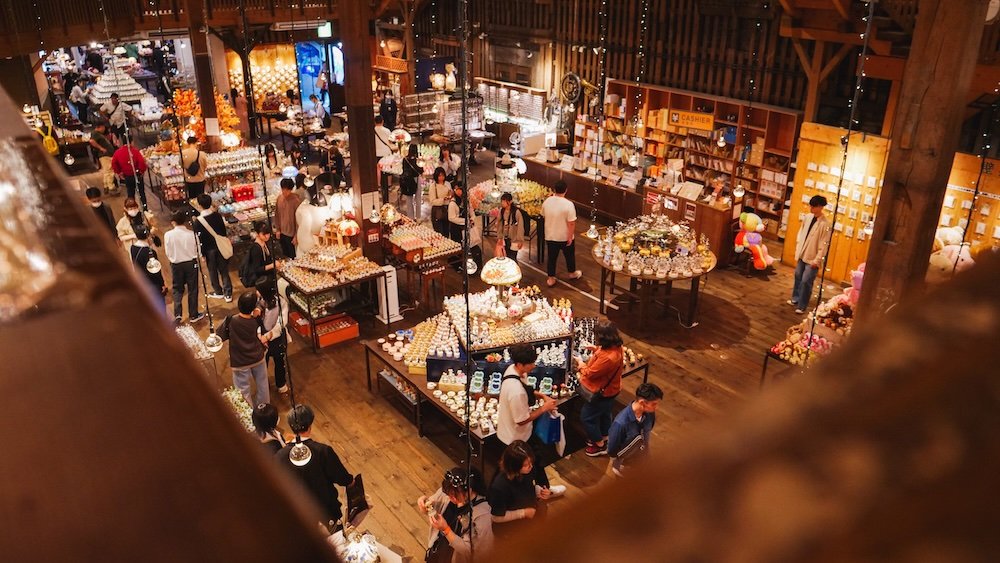
2. Artisan Glass and Sake Tasting Tour
For a blend of local artistry and flavor, consider a tour that pairs visits to Otaru’s glass workshops with intimate sake tastings. Start by watching skilled glassblowers coax molten glass into delicate shapes—teacups, pendants, or whimsical figurines—each piece reflecting centuries-old techniques. Afterward, move to a nearby sake bar where experts guide you through sampling various styles, explaining how rice polishing and fermentation affect aroma and taste. The combination of glass art and sake opens your senses, encouraging you to consider texture, temperature, and subtle notes that might otherwise go unnoticed. This tour offers a multidimensional encounter with Otaru’s soul—one part craft, one part culinary tradition, all stitched together by passionate, friendly guides.
- Highlights: Live glassblowing demos, personal sake recommendations, discovering your favorite sake style
- Don’t Miss: Trying seasonal or limited-edition sakes you won’t easily find elsewhere
- Great For: Art lovers, foodies, travelers seeking an immersive cultural experience
Tip: Sip water between sake samples—it helps cleanse your palate and keeps you refreshed.
3. Culinary Walking Tour of Markets and Backstreets
A culinary walking tour is a delicious way to experience Otaru’s daily rhythms, from bustling markets to quiet alleys dotted with hidden eateries. Guides steer you beyond tourist hotspots, introducing vendors who’ve sold fresh produce or seafood for generations, their smiles as genuine as the flavors. Stopping at small stalls, you might sample grilled corn slathered in butter, warm buns stuffed with savory fillings, or delicate sweets infused with local fruits. Each bite expands your understanding of Hokkaido’s rich bounty, while stories from chefs and shopkeepers add depth and character to what’s on your plate. By tour’s end, you’ve not only tasted Otaru’s best-kept secrets but also grown more connected to the people who make this food scene shine.
- Highlights: Fresh seafood markets, unique street snacks, local produce reflecting Hokkaido’s seasonal shifts
- Don’t Miss: Asking about specialty sauces or condiments to bring home a flavor of Otaru
- Great For: Adventurous eaters, culture explorers, anyone craving authentic tastes
Tip: Arrive hungry—small samples add up, and you’ll want room to enjoy every flavor.
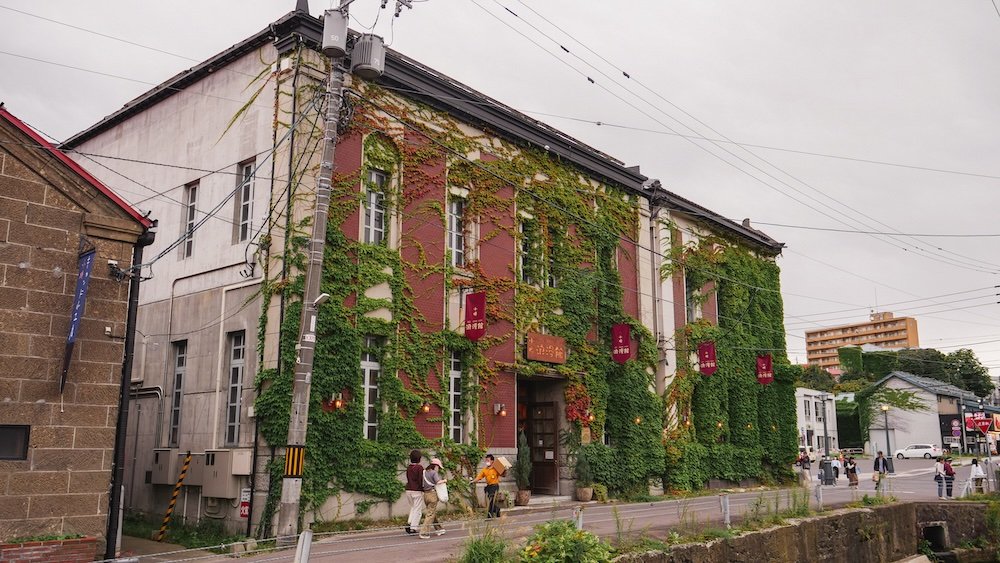
Otaru Accommodations Guide: Hotels, Guesthouses and Hostels
Here is our accommodation guide for Otaru.
Hotels: Comfort and Convenience
Staying at an Otaru hotel often means stepping into a space that blends modern amenities with subtle historical references. Some sit near the canal, offering glimpses of old warehouses at dawn and twinkling lights at dusk. Rooms tend to be plush, with soft bedding, reliable Wi-Fi, and sometimes even private onsens to soothe travel-weary muscles. English-speaking staff frequently assist with directions, dining suggestions, or booking local experiences, making your stay feel seamless and cared for. You’ll pay a bit more than other options, but for travelers craving convenience and quiet luxury, it’s worth every yen.
- Highlights: Canal views, on-site restaurants, attentive service
- Don’t Miss: Asking the concierge for off-the-beaten-path lunch spots—locals often have hidden favorites
- Great For: Comfort-seekers, first-time visitors, couples wanting a relaxing retreat
Tip: Book early during peak seasons—rooms with the best views tend to go fast.
Ryokans: Traditional Comfort and Timeless Atmosphere
Choosing a ryokan in Otaru means embracing a tradition that has warmed travelers’ hearts for centuries. Here, you’ll slip off your shoes at the genkan and step onto tatami floors, where each woven strand tells stories of craftsmanship. Rooms feature low wooden tables, plush futons rolled out after dusk, and perhaps a window framing a quiet garden or distant rooftops. Attentive hosts often serve seasonal kaiseki dinners—carefully arranged dishes that celebrate Hokkaido’s seafood and produce—followed by green tea sipped slowly, savoring each delicate note. Even small gestures, like a yukata robe laid out for you or a gentle nod from staff, highlight the profound hospitality that defines a ryokan stay.
- Highlights: Tatami rooms, seasonal kaiseki meals, intimate onsen baths for relaxation
- Don’t Miss: Engaging with staff about local customs—they might share secret viewpoints or market tips
- Great For: Cultural explorers, couples seeking romance, anyone craving authenticity
Tip: Reserve early during peak seasons—intimate ryokans fill quickly, especially when the leaves change or snow falls.
Guesthouses (Minshuku): Personal Connections and Local Insight
Guesthouses (minshuku) in Otaru blend homestyle warmth with simple comfort, creating spaces that feel like stepping into a friend’s home. Hosts welcome you with genuine smiles, often eager to recommend neighborhood eateries or scenic backstreets unknown to guidebooks. While rooms might be simpler than a ryokan’s refined elegance, they still carry a charm—wooden beams, soft futons, maybe a small vase of wildflowers plucked from a nearby hill. Communal areas invite spontaneous chats, where travelers swap stories and learn unexpected tips, forging friendships that outlast a single journey. Staying here ensures not only a place to rest your head but a chance to immerse yourself in the everyday rhythm that makes Otaru tick.
- Highlights: Home-cooked breakfasts, friendly hosts, opportunities for cultural exchanges
- Don’t Miss: Asking about local markets or festivals—hosts often know where to find authentic experiences
- Great For: Solo adventurers, curious backpackers, budget-conscious travelers craving personal touches
Tip: Learn a few Japanese phrases—even basic greetings can spark meaningful connections.
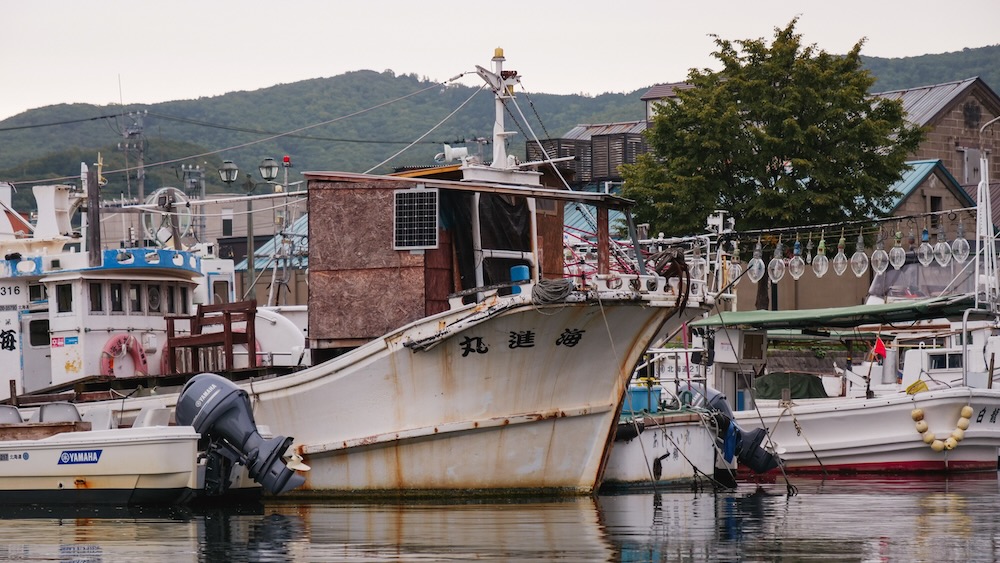
Day Trips From Otaru, Hokkaido, Japan
If you’re blessed with additional time in Otaru, here are some neat day trips to consider.
1. Yoichi Distillery and Coastal Charm
A day trip to Yoichi blends maritime allure with whisky heritage, making it a top pick for travelers who appreciate both scenery and flavor. The Yoichi Distillery, founded by Masataka Taketsuru, offers guided tours that walk you through fermentation rooms and aging cellars, ending with a smooth tasting session. Just beyond the distillery grounds, the coastline stretches gracefully, inviting a quiet stroll to admire fishing boats bobbing in gentle waves. For lunch, local shops serve fresh seafood—grilled scallops or buttery uni—reminding you that the ocean’s bounty is never far away. Finishing off with a lingering glance at distant mountains, you’ll return to Otaru feeling enriched by Yoichi’s easy blend of tradition and natural beauty.
- Highlights: Historic whisky-making, scenic coastal walks, fresh seafood treats
- Don’t Miss: Picking up a bottle of limited-edition whisky to bring home a sip of Yoichi’s essence
- Great For: Whisky enthusiasts, lovers of maritime scenery, anyone seeking a calm and tasteful escape
Tip: Arrive early for distillery tours—popular times fill quickly, and smaller groups mean more personal attention.
2. Shakotan Peninsula’s Azure Waters
The Shakotan Peninsula dazzles with its cobalt-blue seas, rugged cliffs, and tranquil coves that feel worlds away from Otaru’s bustling streets. A winding coastal drive leads you through small villages, where fishermen tend nets and the air carries a salty hush. Hiking trails reveal hidden viewpoints, each offering a new angle on the shimmering coastline that seems painted by nature’s hand. Nearby, small eateries serve local delicacies—think salt-grilled fish or heaping bowls of uni-don—flavors that mirror the region’s untamed spirit. By the day’s end, the Shakotan horizon, with its deep blues and gentle breezes, stays imprinted in your memory.
- Highlights: Crystal-clear waters, scenic hikes, authentic fishing villages
- Don’t Miss: Cape Kamui for panoramic views and a brisk seaside walk that’ll raise your heart rate
- Great For: Nature lovers, photographers, travelers craving dramatic coastal beauty
Tip: Check the weather forecast—clear skies amplify Shakotan’s brilliant blues, making your trip unforgettable.
source: Samuel and Audrey on YT: Nomadic Samuel & That Backpacker as hosts
3. Sapporo’s Urban Energy and Cultural Layers
A quick train ride from Otaru brings you to Sapporo, a city that merges modernity, history, and nature in harmonious layers. Start at Odori Park, where seasonal festivals and art installations breathe life into green lawns. Next, wander toward the Sapporo Clock Tower, absorbing the quiet stories etched in its wooden beams. Lunch could be a steaming bowl of miso ramen or a simple bento enjoyed under blooming cherry trees, depending on the season. Before heading back, hit up a museum or a craft beer bar—Sapporo’s creative pulse ensures no two visits feel the same.
- Highlights: Lively parks, diverse dining options, cultural spots like museums and breweries
- Don’t Miss: Sapporo Beer Museum for a quick lesson in hops and heritage, followed by a refreshing pint
- Great For: City explorers, food enthusiasts, travelers mixing urban flair with historical charm
Tip: Grab a transit pass—Sapporo’s subway and buses streamline exploration without draining your wallet.
4. Niseko’s Green Hills and Winter Thrills
Though famous for its winter powder, Niseko charms visitors year-round with verdant landscapes and outdoor adventures. In summer, cycling or hiking along mountain trails reveals bright wildflowers and distant peaks peeking through soft morning mist. The local farms open their gates, offering tastes of sweet corn, fresh milk, and artisanal cheeses that reflect Hokkaido’s agricultural heart. Winter transforms Niseko into a wonderland—powdery slopes beckon skiers, while onsen baths soothe muscles under starry skies. Even a short trip here promises a rejuvenating blend of nature, flavor, and seasonal surprises.
- Highlights: Seasonal activities (skiing in winter, hiking/cycling in summer), fresh farm-to-table snacks, serene onsen experiences
- Don’t Miss: A mid-afternoon rest at a hillside café—sip coffee as clouds drift lazily over rolling hills
- Great For: Outdoor adventurers, foodie travelers, anyone eager to swap city pace for countryside calm
Tip: Dress in layers—Niseko’s weather can shift suddenly, so being prepared ensures comfort all day long.
Otaru Transportation Guide
Getting Oriented in Otaru
Navigating Otaru’s transportation network feels refreshingly straightforward, especially once you understand the city’s layout and transit options. The main hub, Otaru Station, connects travelers to local trains, buses, and taxis, ensuring you can reach major sights with minimal hassle. Narrow streets and old-fashioned charm mean distances aren’t huge, so a mix of walking and public transit suits most itineraries. English signage is often available at key stations and tourist hotspots, reducing guesswork and anxiety for newcomers. Best of all, slow-paced travel here encourages savoring moments—watching people pass by, listening to distant laughter, and feeling the gentle rhythm of daily life.
- Highlights: Central Otaru Station, walkable core areas, English-friendly signage
- Don’t Miss: Picking up a city map at the tourist desk—sometimes they include helpful coupons
- Great For: First-timers, casual explorers, travelers preferring easy navigation
Tip: Ask station staff for route advice—they’re usually patient and eager to assist.
Trains and Buses for Easy Day Trips
Local trains in Otaru connect you smoothly to neighboring destinations like Yoichi or Sapporo, making quick getaways a breeze. The trains are punctual, clean, and often feature large windows for glimpsing coastal views and rolling hills. Meanwhile, buses fill in the gaps, reaching smaller neighborhoods and attractions not served by rail. Inside the bus, simple payment systems (often just tapping a card or dropping coins) and bilingual signs help you feel confident as you navigate. With these options, it’s easy to craft a day trip that blends city sights with nature’s quiet corners.
- Highlights: Regional train lines, buses reaching offbeat spots, simple fare systems
- Don’t Miss: Taking an early train to beat crowds at popular tourist sites
- Great For: Independent travelers, adventurers seeking flexibility, fans of scenic rides
Tip: Check schedules online before heading out—timing is everything when catching that perfect train or bus.
Taxis and Car Rentals: Freedom to Roam
If you crave more independence, taxis and rental cars give you control over your pace and itinerary. Taxis cluster near major stations, and while pricier than public transit, they’re handy for short hops, heavy luggage, or late evenings. Rental cars open even bigger horizons, letting you zip to remote viewpoints, hidden beaches, or rural eateries only locals know. Just remember that Otaru’s roads can be narrow, and in winter, snow and ice require careful driving. Still, this freedom allows you to shape your journey around personal whims, discovering secret corners others might miss.
- Highlights: Door-to-door convenience, off-the-beaten-path exploration, tailored travel schedules
- Don’t Miss: Asking rental staff for route tips—sometimes they share gems not listed in guidebooks
- Great For: Families, travelers with specific interests, anyone who hates waiting
Tip: Bring an International Driving Permit—it’s required by law for most foreign visitors renting cars.
Exploring on Foot and Two Wheels
For a leisurely approach, exploring Otaru on foot or by bicycle reveals nuances no bus ride can match. Strolling along the canal, you’ll catch subtle details: a hidden café sign, the soft hum of artisans blowing glass behind old shutters. Renting a bike lets you cover more ground, skimming through neighborhoods at a human pace, stopping whenever a shop window beckons. With each step or pedal, the city’s layers emerge—historic warehouses, quiet residential lanes, and sudden ocean glimpses at street ends. Embracing slow transit means seeing Otaru not as a checklist of attractions, but as a living tapestry that rewards curiosity.
- Highlights: Scenic canal walks, unhurried bike rides, spontaneous discoveries
- Don’t Miss: Pausing at local bakeries or ice cream stands—treats taste sweeter when earned by foot or pedal
- Great For: Slow travelers, photographers, anyone savoring life’s small pleasures
Tip: Wear comfortable shoes—cobbled streets and uneven paths demand sturdy footwear.
IC Cards, Passes, and Cost-Saving Tips
Smart payment tools like IC cards (e.g., Kitaca or Suica) streamline your Otaru transit experience, letting you tap and go on trains, buses, and sometimes even small shops. Day passes or weekend deals can save serious yen if you plan multiple rides, freeing budget for that special sushi lunch or handcrafted souvenir. Check local transport websites for promotions, as seasonal discounts encourage off-peak exploration. Balancing convenience and cost, these tools help you focus on enjoying the journey rather than fumbling for coins. Ultimately, a bit of research and the right pass ensure smooth sailing from morning until evening.
- Highlights: IC card convenience, discounted day passes, occasional seasonal promos
- Don’t Miss: Grabbing a pass if you’re hopping around multiple attractions in a single day
- Great For: Budget-savvy travelers, frequent riders, those preferring hassle-free payments
Tip: Keep your IC card topped up—a quick recharge at the station beats scrambling for change mid-journey.
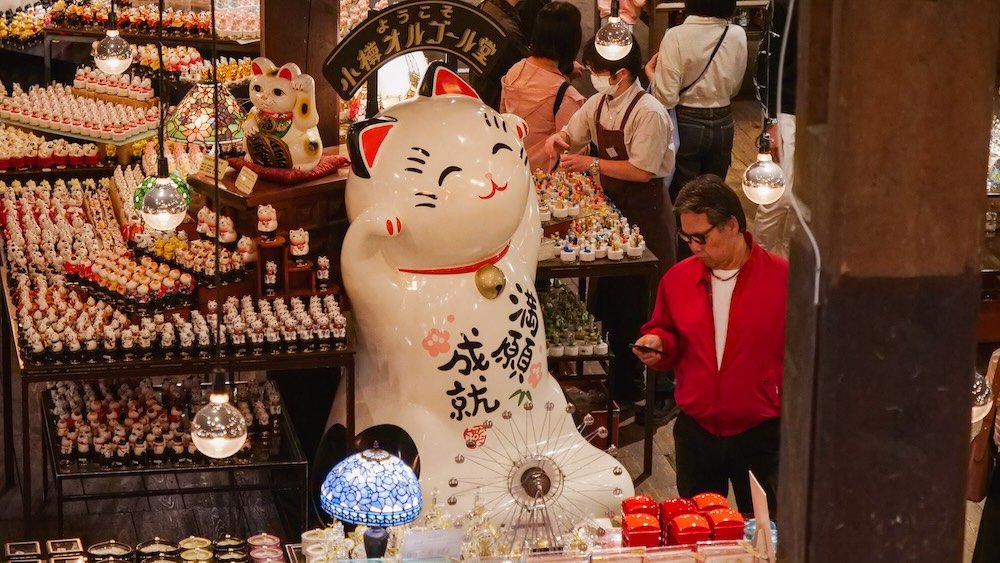
Otaru Travel Guide: Final Thoughts
Otaru moves at its own pace, drifting between quiet mornings by the canal and lively afternoons in bustling market streets. Unlike bigger cities, it invites you to slow down, notice the texture of old wooden doors, the faint scent of roasted coffee, and the gentle hum of distant chatter. Instead of ticking off must-sees, consider lingering over a cup of tea, watching people stroll by as seagulls arc overhead. Each corner can reveal a tiny moment of delight: a hidden bakery, a friendly nod from a local, a subtle detail in a glass sculpture. By surrendering to Otaru’s unhurried flow, you let the city’s character seep into your travel memories, adding warmth and depth long after you’ve left.
Embracing the City’s Rhythms
- Highlights: Canal-side walks, subtle cultural nuances, slowing down to appreciate details
- Don’t Miss: Taking a midday break in a small café—sometimes the simplest pauses become cherished experiences
- Great For: Reflective travelers, photographers, anyone weary of fast-paced itineraries
Tip: Put away your phone occasionally—embracing analog discovery can enhance the city’s intimate charm.
